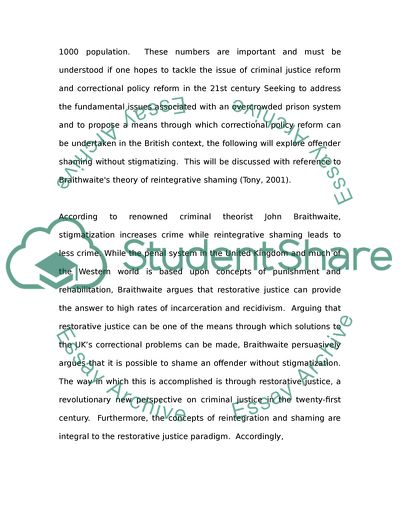Cite this document
(Braithwaite's Theory of Reintegrative Shaming - Disgracing an Offender Literature review, n.d.)
Braithwaite's Theory of Reintegrative Shaming - Disgracing an Offender Literature review. Retrieved from https://studentshare.org/law/1732106-criminological-theories
Braithwaite's Theory of Reintegrative Shaming - Disgracing an Offender Literature review. Retrieved from https://studentshare.org/law/1732106-criminological-theories
(Braithwaite'S Theory of Reintegrative Shaming - Disgracing an Offender Literature Review)
Braithwaite'S Theory of Reintegrative Shaming - Disgracing an Offender Literature Review. https://studentshare.org/law/1732106-criminological-theories.
Braithwaite'S Theory of Reintegrative Shaming - Disgracing an Offender Literature Review. https://studentshare.org/law/1732106-criminological-theories.
“Braithwaite'S Theory of Reintegrative Shaming - Disgracing an Offender Literature Review”. https://studentshare.org/law/1732106-criminological-theories.


